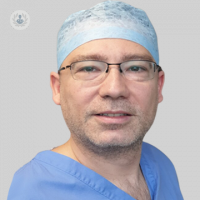Хирургия основания черепа
What is skull base surgery?
Skull base surgery is a highly specialised branch of surgery that uses minimally invasive techniques to diagnose and treat conditions of the skull base, the top of the spine, and the underside of the brain.
Why is it done?
Skull base surgery is generally used to investigate or remove growths (both cancerous and benign) or to repair congenital malformations located around the base of the skull, including those at the top of the spine and around the bottom of the brain.
Conditions that can be treated with skull base surgery include:
- Pituitary tumours
- Meningiomas
- Chordomas
- Trigeminal neuralgia
- Vestibulocochlear nerve disorders
- Craniopharyngiomas
- Hemifacial spasms
- Craniostenosis
- Cerebro-spinal fluid fistulas
- Cerebral aneurysms
- Arteriovenous malformations (AVMs)
What does it involve?
Skull base surgery is minimally invasive – the surgeon does not have to create an opening in the skull (craniotomy). Instead, special surgical tools are inserted through the natural openings in the skull – the mouth, nose, and above the eyes. This gives skull base surgery several advantages:
- Lower risk of infection
- Lower risk of damage to the nerves and structures of the head
- Lower risk of disfigurement
- Faster recovery
Skull base surgery is a complex procedure, which requires a multi-disciplinary approach; a team of surgeons and doctors from different specialties will be involved in planning and carrying out the operation. Depending on the case, the team might be formed by an otolaryngologist, a neurosurgeon, and a radiation oncologist, with the possible additions of maxillofacial surgeons and plastic and reconstructive surgeons. Paediatric specialists also become involved if the patient is a child.
Alternatives to this treatment
Prior to the development of skull base surgery it was necessary to remove relatively large portions of the skull and/or facial musculature in order to gain entry into these areas.




